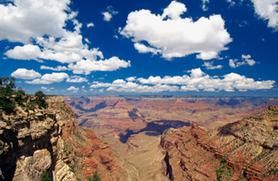 “Medioimages/Photodisc/Getty ImagesDCL
“Medioimages/Photodisc/Getty ImagesDCL
We are losing 1% of our topsoil per year. You may think that this problem is confined to farmers and that they are going to have to be the ones that deal with it, but erosion affects everyone, especially if you are a gardener or a lawn enthusiast. Luckily, most lawn erosion problems are preventable.
9 ways to Prevent Erosion
1. Employ a rain barrel or other form of water catchment system. Divert water to the garden or store it.
2. Plant trees and shrubbery especially near slopes and shorelines. These plants can ( reduce runoff by 50%. Trees can also be used to shade your house.
3. Grow plants on slopes. Grass does not stop erosion on slopes.
4. Plant a rain garden to soak up excess moisture and stop runoff.
5. Use mulch whenever possible.
6. Bald spots in your yard or garden are bad news. Cover them with mulch and get something growing there ASAP.
7. Build terraces or a retaining wall. Any mid-yard structure will do a good job of stopping water and soil from leaving your yard.
8. Plant native plants with absorbent root structures.9. Leave your yard untilled.
Originally Published: Jan 11, 2012
Preventing Erosion FAQ
What are the four main causes of erosion?
The biggest reason for soil erosion is water. This includes water from rain, rivers, floods and oceans. However, the four main causes of soil erosion throughout the globe are splash erosion, sheet erosion, rill erosion, and gully erosion.
What are the methods of preventing soil erosion?
There are several ways to prevent/reduce soil erosion. These include: preventing overgrazing by cattle; planting more trees; contour ploughing; and planting vegetation covers.
What plants prevent soil erosion?
Plants act as ground covers; whether they’re vines, shrubs, trees or even grass. Almost every plant can be an agent to preventing soil erosion around them, but for best results, there should be a large number of plants in one place (or just one large tree) to hold the soil.

































